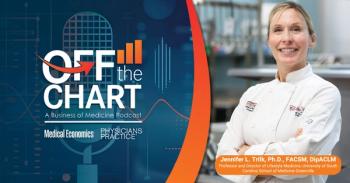
VA Modernizes the Way Physician Assistants Practice in Four Ways
A recent directive from the Department of Veterans Affairs enhances PA autonomy while strengthening team and collaborative practice.
The recent
The military has always been near and dear to the PA profession. PAs are not only on the front lines of medicine and surgery, but they are on the front lines of battle as well.
There are approximately 10,900 PAs in the workforce that are veterans, active duty or retired military, or in the National Guard or Reserves - comprising approximately 11 percent of the entire PA workforce.
The PA profession was originally created with Navy corpsmen to help meet a shortage of primary-care providers, and the first PA class graduated from the Duke University PA program on Oct. 6, 1967.
In an effort, I assume, to maximize the abilities of medical providers in the VA to practice medicine, the directive modernizes the way PAs practice in four major ways:
•
• Updates the descriptions in the responsibilities section to provide greater clarification.
• Establishes core PA scope of practice and expanded scope of practice elements.
• Establishes specific levels of PA practice autonomy.
• Updates requirements for physician oversight of PA practice
The directive essentially recognizes what all of us who practice medicine know from experience. There is a big difference between a new graduate physician and a PA, and those with many years of experience in their field. Medicine relies not only on strong training in pathophysiology, but also on experience and pattern recognition, which only comes from time, and direct contact with thousands of patients.
The VA has recognized that the ability of its PA workforce to function autonomously varies by the PA, and his or her training and experience. This also serves to reduce the administrative workload of the physician team leaders.
If you work with PAs, you can likely attest to the value of having another provider around who shares diagnostic and therapeutic reasoning. That’s because PAs are educated like physicians via an intense graduate-level medical program, and that education occurs often side-by-side with physicians in medical schools and residency programs. We think alike because we both practice medicine.
For PAs with appropriate training and high levels of experience, administrative oversight by physician team leaders can be nothing more than an administrative exercise and burden.
For instance, I graduated PA school more than 30 years ago and the “supervision” I have received from my physician colleagues changed as my experience grew.
I’m glad the VA did away with the word "supervision" in their recent directive, favoring a “collaborative” relationship between PAs and physicians and allowing that team to decide how autonomously a PA will practice. The best and most effective teams of physicians and PAs rely on knowing the experience and strengths of each provider when deciding on how to handle patient care.
The VA system is the largest employer of PAs in the country, not to mention the nation’s largest healthcare system. It has been a long road for our federal PAs, and positive change has been helped along by the elevation of a PA, Denni Woodmansee, director of PA services at the U.S. Department of Veterans Affairs, who worked with all stakeholders at the VA to clarify the roles and appropriate utilization of PAs in VA medical facilities.
These new guidelines demonstrate not only how versatile and dynamic PAs can be when it comes to practicing medicine, but the VA's confidence in the quality of care PAs can render autonomously to the millions of veterans and others who rely on the federal healthcare system.
And yet, the VA is only the latest organization in our country to modernize practice laws for PAs. Did you know that 42 states and the District of Columbia all made PA-positive changes to their laws in the past 12 months?
From authorizing expansion of the PA role, to repealing barriers to full and effective PA practice, to simply recognizing the value of PAs in the workforce, smart state and federal lawmakers are making sure that PAs can properly care for patients.
These guidelines from the VA are part of the tidal wave of modernizing laws that recognize the reality of modern physician-PA team practice, and I hope that jurisdictions everywhere keep and open mind and look to better match reality and current practice to regulation.
This blog was provided in partnership with the
This blog was provided in partnership with the American Academy of Physician Assistants. - See more at: http://www.physicianspractice.com/blog/flu-vaccines-healthcare-providers-right-thing-do#sthash.1kwvVUL7.dpuf
Newsletter
Optimize your practice with the Physicians Practice newsletter, offering management pearls, leadership tips, and business strategies tailored for practice administrators and physicians of any specialty.










